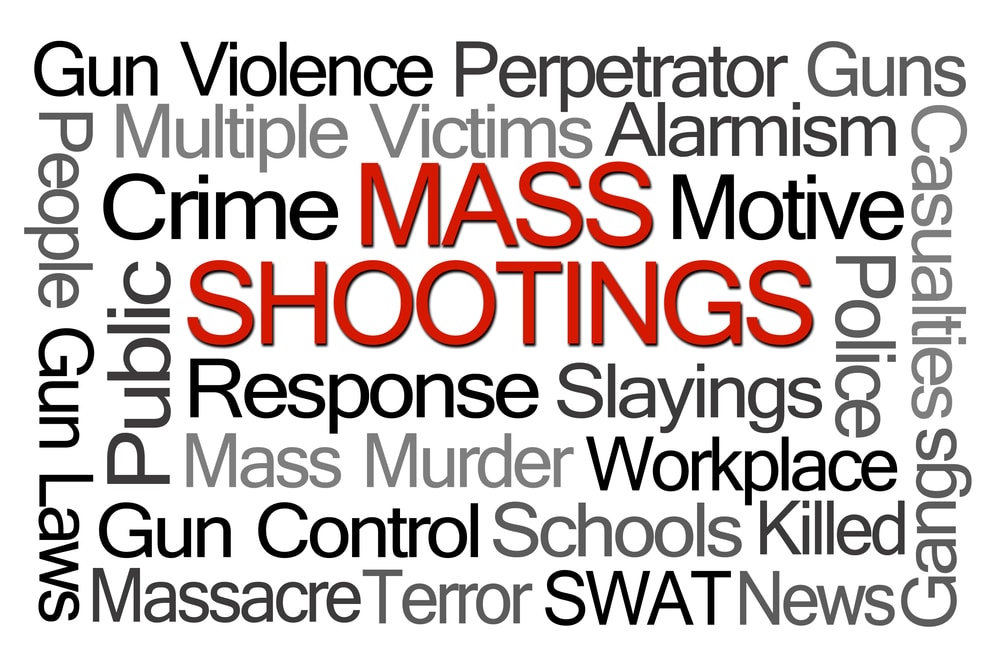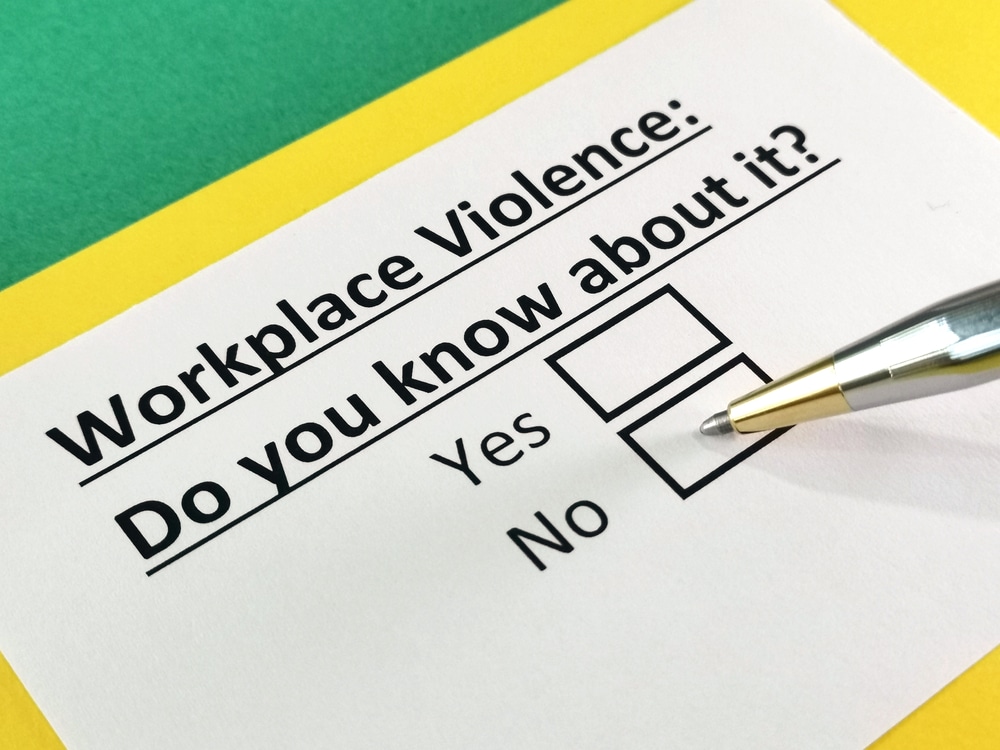Assembling a Workplace Threat Assessment Team

Knowing how to recognize and address potential threats in your organization is essential to safeguard employees in the workplace. The risks associated with any threat, whether made in haste in a heated moment or carefully calculated to instill fear, must be investigated to avoid disaster.
Establishing procedures and strategies to identify and assess threats and concerning behaviors will make the workplace safer. Take a look at how you can manage employee threats and assess the level of concern that needs to be utilized.
No workplace should have to deal with threats of harm, but being prepared to handle the worst scenarios by assembling a workplace threat assessment team will set you up for success.
If you need active shooter training for your employees we have a full training course.
What Is The Nature Of A Threat?
A threat is any danger implied, be it physical or otherwise, towards employees or civilians in a specified place of business. Since only the perpetrators know their true intent, it’s almost impossible to identify if threats will truly turn violent if left alone. Rather than risk the lives of every employee involved, every student in a school, or the company’s future, it’s best to investigate for safety.

Assessing threats, both internal and external, is one way to address threatening behavior. Any potential threat could lead to a catastrophic event, and identifying the warning signs could save lives. Whether it’s a disgruntled employee in an active shooter situation, a co-worker threatening another employee, or any number of scenarios, being prepared is the key to keeping your staff safe.
However, behavioral threat assessment is fluid and changes over time. A set guideline is difficult to nail down due to the ever-changing nature of behavior. Instead, assessment is conducted by using several different observations and pieces of evidence to determine the risks.
What Is Workplace Violence?
While it cannot be defined as one specific action, it can be encompassed as a variety of behaviors that include blatant acts of violence, verbal threats, and any conduct that causes concern over safety in a working environment. OSHA has it’s own definition and the key is to understand that violence in the workplace can and does occur.
It’s these acts that cause concern, leading to the formation of specialized teams that are equipped to handle escalated situations and restore peace in a workplace, be it through termination or other means.
What Is A Threat Assessment?
A threat assessment is an evaluation of the risks involved with a particular threat, whether violence or hazardous materials were mentioned or displayed in the workplace. When one can document the harm done or implied with a threat, one can monitor the individual more closely, identify concerning actions, and follow procedures to file a report.
Every organization has its troubles, but any harm that befalls a worker is unacceptable. Implementing better security protocols and intervening on behalf of the employees can play an important part in deescalating a dangerous situation and securing the facilities.
These assessments bring together employees from across the organization, each with different backgrounds and perspectives to help build and support coworkers who would otherwise be affected. These strategies provide a greater chance of success when determining the risk of a threat coming to fruition.

How It Looks In Action
When threats are made against an employee’s life, it’s time to take action. Your response must be swift and impactful if any changes are going to happen. The process can take time, but a thorough analysis of the situation is the best way to prepare.
When going to implement the plan with human resources, it looks like a team of people working together to remove the threat peacefully before tensions rise too high and someone gets hurt. This can result in negotiations with unions, and it can finalize the termination of an employee if the threat is deemed relevant.
What is a Threat Assessment Team in the Workplace?
Threat assessment teams are one example of how to assemble personnel to practice protecting coworkers and examine the limitations of singular operators attempting to uproot the threat on their own.
Rather, a team of qualified individuals can craft a response and begin the process of determining how to proceed with the employees involved, whether that means one needs to support them or report them.
A threat assessment team needs guidance to establish safety and security in the workplace. Violence is a deeply concerning act, especially when it happens in the organization’s facilities. The teams can begin identifying these threats and evaluate them to ensure no harm comes to pass.
Finally, when your business is conducting emergency drills, could you incorporate active shooter scenarios? Since this is one of the biggest threats to a workplace from a violence perspective, you must include those scenarios in your emergency planning.

How To Build A Team
Building a team requires qualified individuals who can easily intervene and present detailed plans of action to help the team stay organized. This should be a team of people who can keep an open mind when it comes to evaluating an employee’s risk factors and following up with them without bias.
School administrators must learn how to engage with students and de-escalate situations in a classroom setting, which can quickly become hazardous. Meanwhile, fire departments deal with calls where a situation may develop into life-threatening behavior in moments, requiring expert handling to minimize the threat.
Evaluate your industry’s needs first to prioritize your team’s safety, and create a unit that will respect and create policies that align with the values of the Human Resources Department.
How To Train A Team
A team will need to be trained to focus on the goal of security and risk management. A threat to any individual employee is a threat to the team as a whole. Training should cover identifying a threat, monitoring behavioral threat assessment situations, and providing guidance for the parties involved to ensure that violence does not occur.
Training will equip the threat assessment team with the knowledge to assess the risk in the facilities they work in and utilize additional information at their disposal to determine an outcome that promotes safety and security above all.
Threat Assessment Procedures
Having identified how to build a team, following procedures is the next step after training. Mental health professionals handle difficult situations every day, but when those circumstances enter your workplace and you’re unprepared to deal with them, it’s time to process the risk of violence associated with a threat.

Establish Multidisciplinary Threat Assessment Teams
Teams should be able to perform various tasks, such as analysis, assessment, reporting, and guidance. This ensures that the team is well-rounded and able to handle both physical and verbal threats that are hurled at them or coworkers.
To establish such a team takes great care, but it’s for the benefit of the working environment.
Identify Threats
Knowing how to recognize a threat or physical act of violence in training is one thing, but having to process and acknowledge the threat in person can be devastating. Teams work together to share the burden and brainstorm ideas together to help minimize the risk and improve another person’s life, all while adhering to policies set by the company.
Create A Central Reporting System
A central reporting system ensures that guidance organizes the way reports are handled, speeding up the time it takes to complete a threat assessment and making it easier to find previous reports that may be needed for comparison.
Any work that develops with individuals that need to be monitored can be streamlined through a central reporting system. The threat assessment reports can be easily retrieved and stored as needed, removing the risk of a physical copy falling into the wrong hands.
How Do You Create A Threat Assessment?
To create a threat assessment, you’ll want to note where the incident occurred, who made the threat, and any other important details that need to be recorded. Then, you’ll want to follow four steps to ensure that the process goes smoothly.
The first step occurs when you’re notified of the threat. This inciting incident alerts you to the problem and begins the process altogether. Sharing information with the closest authority can help streamline this.
The second step is to gather more information on the individual who made the threat. This can include, but is not limited to, teachers, friends, employers, family, etc. This will help establish a background and any important but easily overlooked aspects.
The third step is to analyze the information and what it means. Every organization will have a different way of doing this, allowing the data to develop uniquely, but it’s important to go over it thoroughly.
The final step is to make the assessment and follow through with it. As you develop your report, your organization should support you in your endeavors. If the individual in question proves to be a threat or is believed to be one, the next objective is to plan on moving them around or removing them from the organization entirely.

How To Prepare For Threat Assessment Scenarios
Knowing how to prepare for these scenarios is an important way to safeguard your organization, be it a school or fire department. By outlining a plan of action and following through, many threats can be eliminated before they even get off the ground.
It’s important to monitor an individual’s background and history with violence, though equally important to not treat them with bias based on those actions. It’s a delicate balance, but it will protect your interests and keep the work environment safe.
Document Emergency Response Plans
Assessing how to approach a threat and assign security needs to be documented. The best way to prepare for these situations is to prepare the necessary components long before the problem arises. It can be difficult to know when that is, especially when standing in the middle of the problem, but knowing basic steps can help.
For example, writing down emergency escape routes in the case of a threat in the building can help save lives, as well as streamline the evacuation process. Also, the time it takes to develop a threat assessment plan for your organization can save you precious moments in an emergency later.
Final Thoughts On Threat Assessments In The Workplace
Overall, it’s a major responsibility to not only recognize but analyze threats when they are made in the workplace. It’s better to be safe than sorry in these situations, as a momentary lapse in judgment could prove fatal.
Outlining clear procedures and executing precise communication consistently will keep your workplace running smoothly, regardless of the situation at hand.